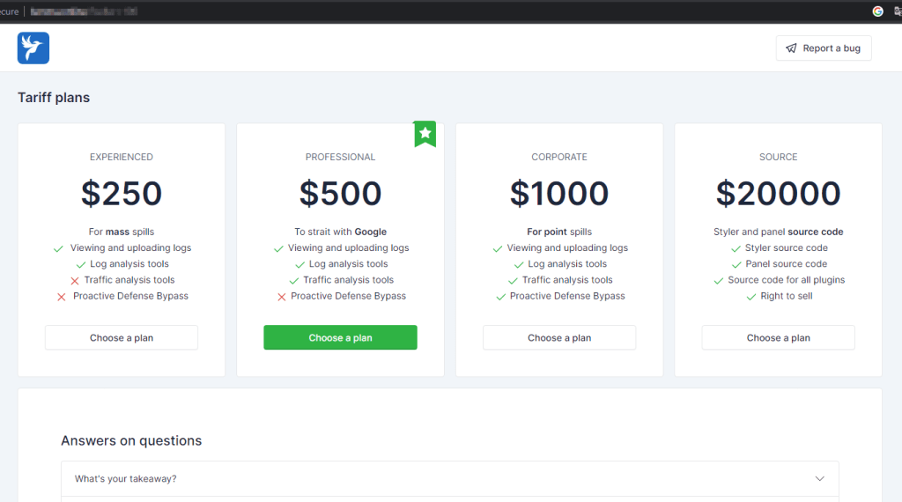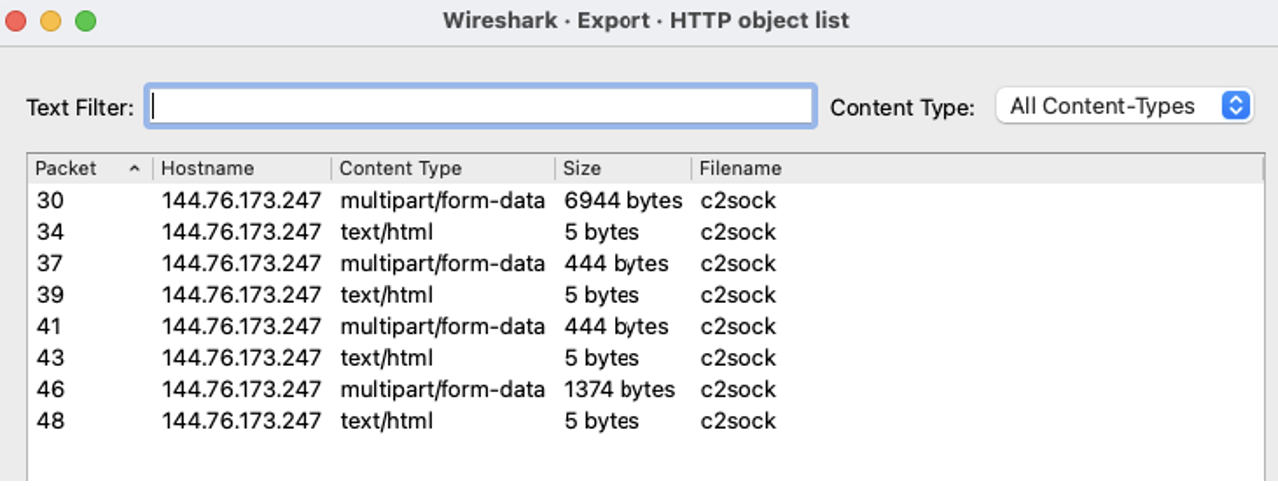What are Malware-as-a-Service information stealers?
The Malware-as-a-Service (MaaS) model continues provide would-be threat actors with an inexpensive and relatively straightforward way to carry out sophisticated cyber attacks and achieve their nefarious goals. One common type of MaaS are information stealers that specialize in gathering and exfiltrating sensitive data, such as login credentials and bank details, from affected devices, potentially resulting in significant financial losses for organizations and individuals alike.
What is Lumma Information Stealer?
One such information stealer, dubbed “Lumma”, has been advertised and sold on numerous dark web forums since 2022. Lumma stealer primarily targets cryptocurrency wallets, browser extensions and two-factor authentication (2FA), before ultimately stealing sensitive information from compromised machines. The number of sightings of this malware being distributed on dark web forums is on the rise [1], and thus far, more than a dozen command-and-control (C2) servers have been observed in the wild.
Between January and April 2023, Darktrace observed and investigated multiple instances of Lumma stealer activity across the customer base. Thanks to its anomaly-based approach to threat detection, Darktrace is able to successfully identify and provide visibility over activity associated with such info-stealers, from C2 activity through to the eventual exfiltration of sensitive data.
Lumma Stealer Background
Lumma stealer, previously known as LummaC2, is a subscription-based information stealer that has been observed in the wild since 2022. It is believed to have been developed by the threat actor “Shamel”, under the the alias “Lumma”. The info-stealer has been advertised on dark web forums and also a channel on the Telegram messenger server, which boasts over a thousand subscribers as of May 2023 [2], and is also available on Lumma’s official seller page for as little as USD 250 (Figure 1).

Research on the Russian Market selling stolen credentials has shown that Lumma stealer has been an emerging since early 2023, and joins the list of info stealers that have been on the rise, including Vidar and Racoon [1].
Similar to other info-stealers, Lumma is able to obtain system and installed program data from compromised devices, alongside sensitive information such as cookies, usernames and passwords, credit card numbers, connection history, and cryptocurrency wallet data.
Between January and April 2023, Darktrace has observed Lumma malware activity across multiple customer deployments mostly in the EMEA region, but also in the US. This included data exfiltration to external endpoints related to the Lumma malware. It is likely that this activity resulted from the download of trojanized software files or users falling victim to malicious emails containing Lumma payloads.
Lumma Attack Details and Darktrace Coverage
Typically, Lumma has been distributed disguised as cracked or fake popular software like VLC or ChatGPT. Recently though, threat actors have also delivered the malware through emails containing payloads in the form of attachments or links impersonating well-known companies. For example, in February 2023, a streamer in South Korea was targeted with a spear-phishing email in which the sender impersonated the video game company Bandai Namco [4].
Lumma is known to target Windows operating systems from Windows 7 to 11 and at least 10 different browsers including Google Chrome, Microsoft Edge, and Mozilla Firefox [5]. It has also been observed targeting crypto wallets like Binance and Ethereum, as well as crypto wallet and 2FA browser extensions like Metamask and Authenticator respectively [6]. Data from applications such as AnyDesk or KeePass can also be exfiltrated by the malware [7].
An infection with Lumma can lead to the user's information being abused for fraud, for example, using stolen credentials to hijack bank accounts, which in turn could result in significant financial losses.
Once the targeted data is obtained, it is exfiltrated to a C2 server, as Darktrace has observed on multiple customer environments affected with Lumma stealer. Darktrace identified multiple infected devices exfiltrating data via HTTP POST requests to known Lumma C2 servers. During these connections, DETECT commonly observed the URI “/c2sock” and the user agent “TeslaBrowser/5.5”.
In one instance, Darktrace detected a device using the “TeslaBrowser/5.5” user agent, which it recognized as a new user agent for this device, whilst making a HTTP post request to an unusual IP address, 82.117.255[.]127 (Figure 3). Darktrace’s Self-Learning AI understood that this represented a deviation from expected behavior for this device and brought it to the attention of the customer’s security team.

Further investigation revealed that accessing the IP address using a web browser and changing the the URI to “/login”, would take a user to a Russian Lumma control panel access page (Figure 4)

A deep dive into the packet captures (PCAP) of the HTTP POST requests taken from one device also confirmed that browser data, including Google Chrome history files, system information in the form of a System.txt file, and other program data such as AnyDesk configuration files were being exfiltrated from the customer’s network(Figures 5 and 6).


Additionally, on one particular device, Darktrace observed malicious external connections related to other malware strains, like Laplas Clipper, Raccoon Stealer, Vidar, RedLine info-stealers and trojans, around the same time as the Lumma C2 connections. These info-stealers are commonly marketed as MaaS and can be bought and used for a relatively inexpensive price by even the most inexperienced threat actors. It is also likely that the developers of these info-stealers have been making efforts to integrate their strains into the activities of traffer teams [8], organized cybercrime groups who specialize in credential theft with the use of info-stealers.
Conclusion
Mirroring the general emergence and rise of information stealers across the cyber threat landscape, Lumma stealer continues to represent a significant concern to orgaizations and individuals alike.
Moreover, as yet another example of MaaS, Lumma is readily available for threat actors to launch their attacks, regardless of their level of expertise, meaning the number of incidents is only likely to rise. As such, it is essential for organizations to have security measures in place that are able to recognize unusual behavior that may be indicactive of an info-stealer compromise, while not relying on a static list of indicators of compromise (IoCs).
Darktrace's anomaly-based detection enabled it to uncover the presence of Lumma across multiple customer environments across different regions and industries. From the detection of unusual connections to C2 infrastructure to the ultimate exfiltration of customer data, Darktrace provided affected customers full visibility over Lumma infections, allowing them to identify compromised devices and take action to prevent further data loss and reduce the risk of incurring significant financial losses.
Credit to: Emily Megan Lim, Cyber Security Analyst, Signe Zaharka, Senior Cyber Security Analyst
Appendices
Darktrace DETECT Models
· Anomalous Connection / New User Agent to IP Without Hostname
· Device / New User Agent and New IP
· Device / New User Agent
· Anomalous Connection / Posting HTTP to IP Without Hostname
Cyber AI Analyst Incidents
· Possible HTTP Command and Control
· Possible HTTP Command and Control to Multiple Endpoints
List of IoCs
IoC - Type - Description + Confidence
144.76.173[.]247
IP address
Lumma C2 Infrastructure
45.9.74[.]78
IP address
Lumma C2 Infrastructure
77.73.134[.]68
IP address
Lumma C2 Infrastructure
82.117.255[.]127
IP address
Lumma C2 Infrastructure
82.117.255[.]80
IP address
Lumma C2 Infrastructure
82.118.23[.]50
IP address
Lumma C2 Infrastructure
/c2sock
URI
Lumma C2 POST Request
TeslaBrowser/5.5
User agent
Lumma C2 POST Request
MITRE ATT&CK Mapping
Tactic: Command and Control -
Technique: T1071.001 – Web Protocols
References
[1] https://www.kelacyber.com/wp-content/uploads/2023/05/KELA_Research_Infostealers_2023_full-report.pdf
[2] https://www.bleepingcomputer.com/news/security/the-new-info-stealing-malware-operations-to-watch-out-for/
[3] https://blog.cyble.com/2023/01/06/lummac2-stealer-a-potent-threat-to-crypto-users/
[4] https://medium.com/s2wblog/lumma-stealer-targets-youtubers-via-spear-phishing-email-ade740d486f7
[5] https://socradar.io/malware-analysis-lummac2-stealer/
[6] https://outpost24.com/blog/everything-you-need-to-know-lummac2-stealer
[7] https://asec.ahnlab.com/en/50594/
[8] https://blog.sekoia.io/bluefox-information-stealer-traffer-maas/
Get the latest insights on emerging cyber threats
This report explores the latest trends shaping the cybersecurity landscape and what defenders need to know in 2025
.avif)






























.jpeg)






